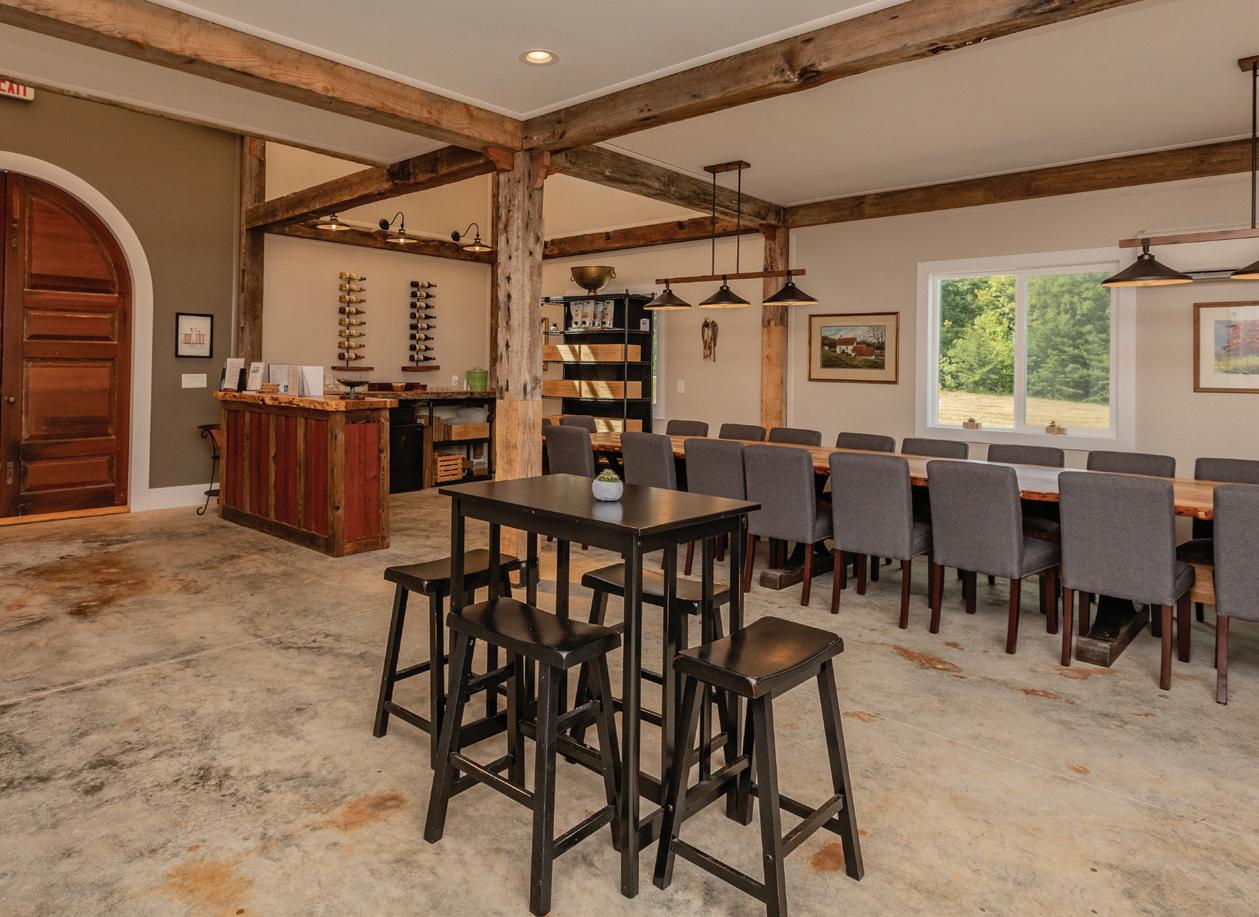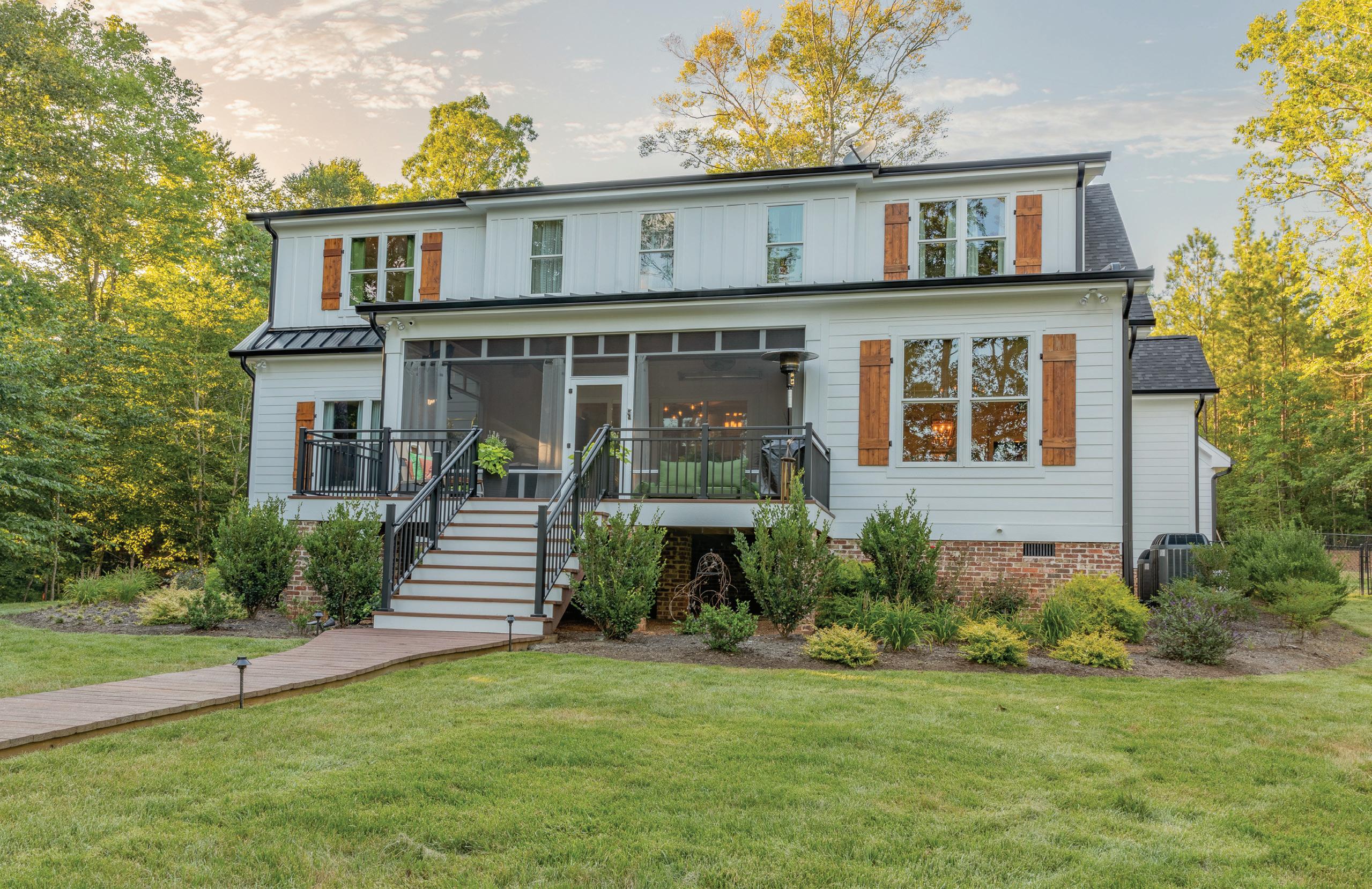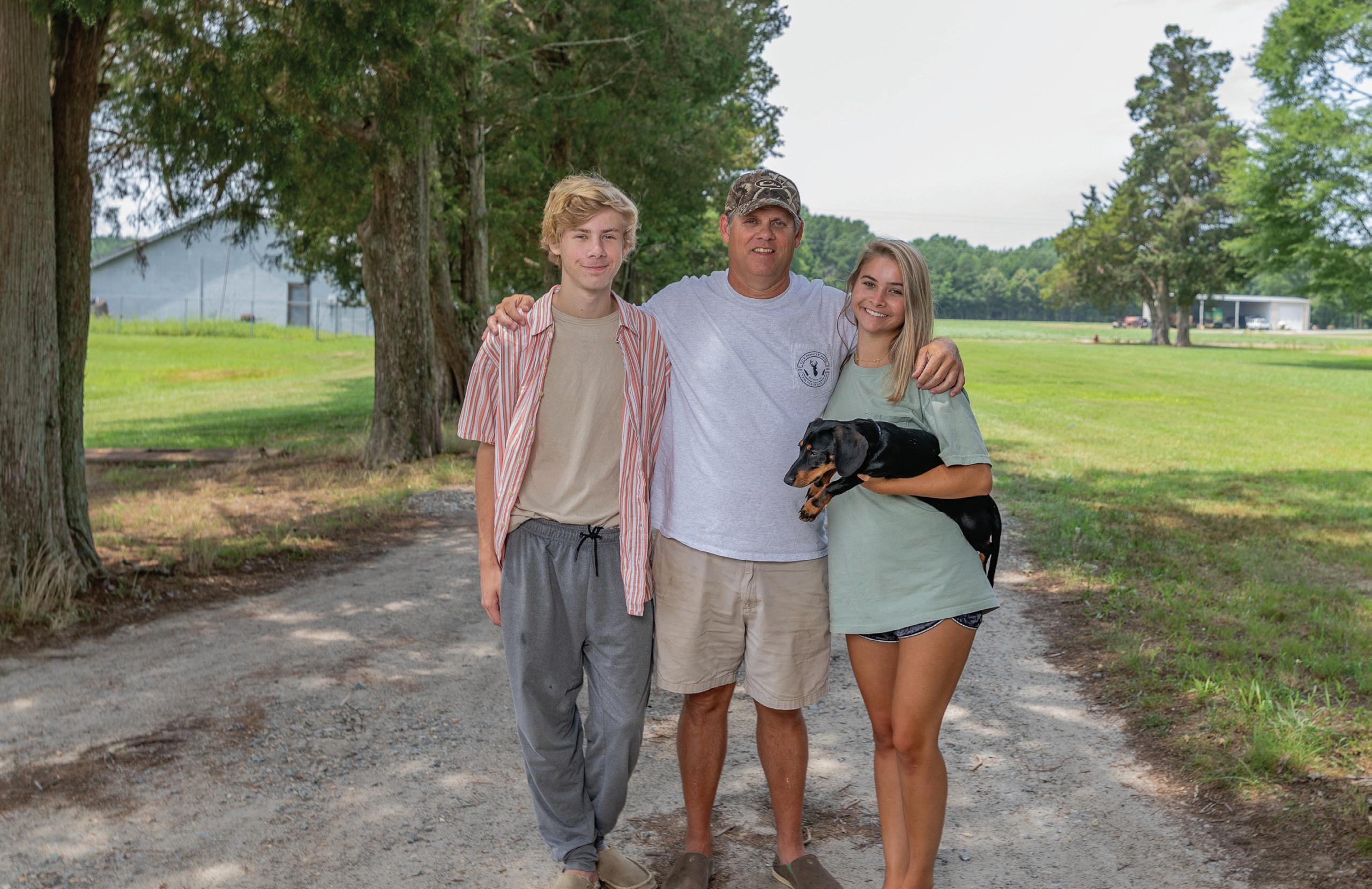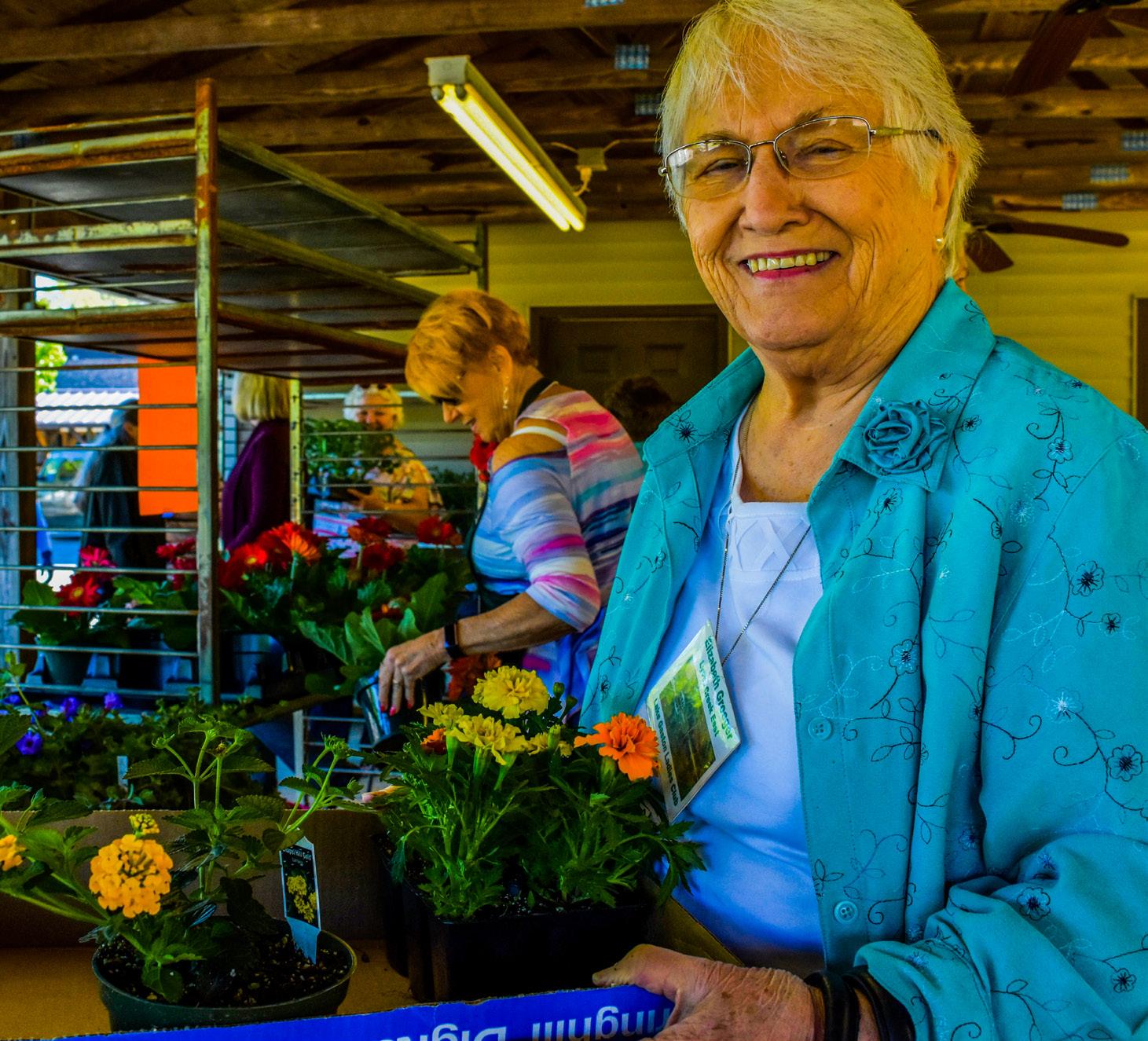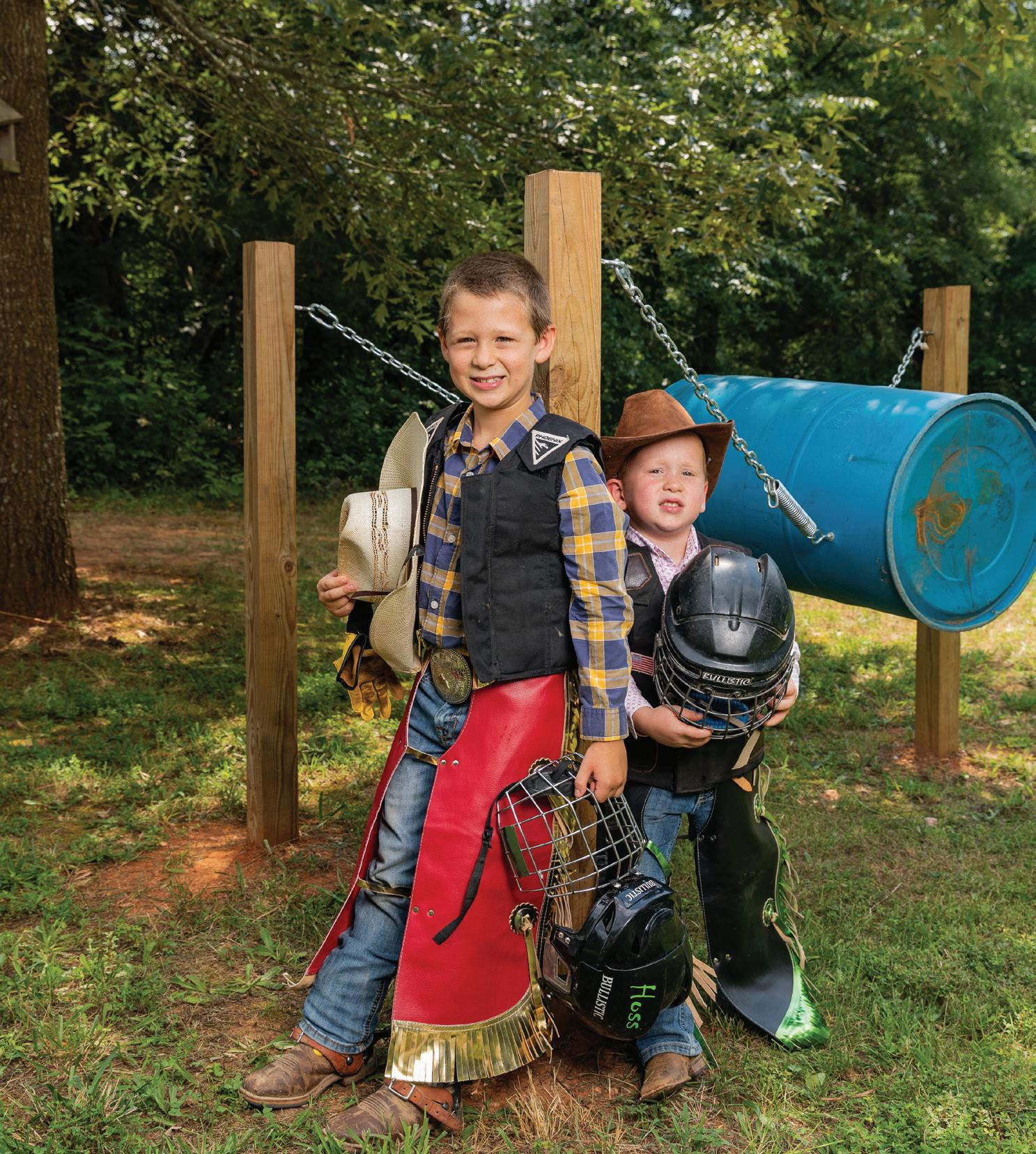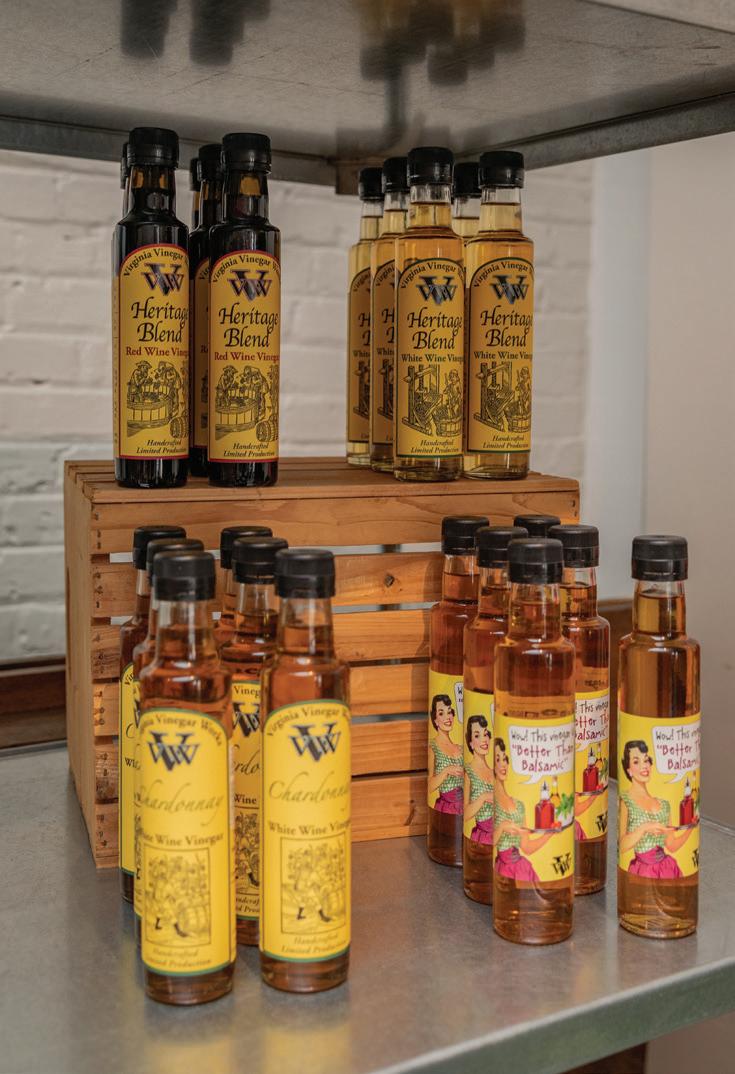
9 minute read
For the Taste of It
Photography by Justin Robinson
Along a small Virginia creek in a quiet corner of heaven, Sandy and Milt McPherson tend the vines and bottle some unique vintages.
Advertisement
Hunting Creek Vineyard began making wine in 2002 when owners Sandy and Milt McPherson started with a plot of ground and three hundred little vines. Today they've created some of the East Coast's most interesting libations. The vineyard, nestled in the foothills of Clover VA, shares a longitude with the some of the best Mediterranean viticultural regions and is proving itself ideal for growing some of the finest European grapes. Modern viticulture is immersed in soil samples and pH levels that make cultivating grapes and aging a good wine a combination of art and science. Wine grapes flourish in a mix of sand, silt, and clay, in a well drained area with just the right amounts of trace minerals. Clover meets those expectations and provides the perfect location for growing some of the finest fruits in the region.“They are not indigenous to America. Merlot, Malbec, Petit Verdot, Viognier. We have developed relationships with Front Porch Vineyards and Pinehaven Vineyards to purchase locally grown quality grapes to expand our wine selections. They have diligent viticultural techniques that produce our excellent Cabernet Sauvignon and Cabernet Franc grapes. ‘Local’ is very important to us.” Sandy explained that, as in any industry, winemakers have their own language and a lot of information, decision making and care that goes into making good wines. Hunting Creek offers nine varieties of wine with distinct and unusual names: Pure Luck, made from Viognier grapes and aged in neutral oak barrels. Confession, a dry white wine from Pinot Gris purchased from a local vineyard. “The grapes were grown by Front Porch Vineyards in Pamplin, Va,” Sandy explained, adding that “Confession, is good for the soul." Innocence is a well balanced Traminette, while Forbidden is a Rosé made from Chambourcin grapes left on the skins for twelve to fourteen hours. Indulgence is a blend of Merlot, Malbec, Petit Verdot and Cabernet Sauvignon. It is described as lush and pairs well with lamb and porkdishes as well as mixed green salads. “This blend makes an elegant,smooth wine with a nice finish,”said Sandy.
“Indulgence is our signature wine. Each year the blend varies depending on the amount and quality of the grapes grown. Our son, Jeremy Ligon, is a talented winemaker who contributes to crafting each year's Indulgence blend with his precise palate and wine-making expertise. Tasters enjoy comparing different vintages of the Indulgence and noticing the unique characteristics that change from year to year.” Jeremy recently decided to come home and put his expertise to work for family vineyard. While Sandy said Jeremy has always worked with the family, lending his expertise, it will be good to have him home full time. “He helps us evaluate our wines and pushes us forward with his knowledge,” she said. Jeremy has worked in vineyards since he was 16 years old and later graduated from California State University where he earned a Bachelor of Science in Oenology with concentrations in both chemistry and viticulture. After school he traveled across California gaining experience and knowledge from west coast vineyards. Returning to the east coast, he joined the Philip Carter Winery in 2012 where proprietor Philip Carter Strother called him a “rising star” in the Virginia wine industry. Indeed, Jeremy was also voted number one winemaker to watch in Virginia by the staff at Scoutology.com. In 2015 he made the move to Creeks Edge Vineyard in Lovettsville, VA here he was recognized with a Silver medal by the Virginia Wineries Association for his 2017 Family Blend, 2018 Rosé and 2017 Chardonnay at the Virginia Governor’s Cup and a gold medal for his 2017 Cab Franc. “He’s a very good wine maker,” remarked Sandy. “He has an exceptional palate. He’s formerly trained. I think that will help as we do events and planning together.” Currently the McPhersons produce about one thousand cases of wine each year. Sandy, Milt and the family are out in the fields long from Chambourcin grapes left on the before the first grapes are harvested, pruning the vines back when the grapes are dormant to prepare them for the winter. In spring, new growth appears and stems elongate, winding their way up trellises with a little help. The vine is kept off the ground to encourage strong growth and to prevent deterioration once the fruit appears. Thinning takes place during the growing season. Sandy said this allows the vintner to control the amount of fruit produced. “It helps you create a balance so you can have pretty and full fruit,” she explained. “You can space the fruit out.”
Grapes don’t need a lot of help being grapes as they grow and make clusters of beautiful fruit. She said it’s fortunate that they live in a temperate zone where rain is just about right for the vines. If there are drought conditions the family has an irrigation system to work with. “Once vines are established in the first year it’s better to let them struggle a little,” she noted. “It makes the 21 roots grow deep and makes the vine stronger. You want the foliage to stay healthy but if it’s a little dry at the end of the season it gives the grape sweeter taste and gives the wine a better body.” Of course, everything in farming is contingent on the weather and hurricane season can ruin a crop if it comes through at the end of season. “A lot of rain from a hurricane can swell the fruit and cause it to burst,” she said. Harvest comes at the end of August for white grapes. Reds are harvested in September and October. Sandy said the farm has six to eight small harvests during the season. A group of friends joins the family in the fields and hand selects the fruit that is ready. Hand harvesting is the first line of defense to ensuring that only the best grapes make the cut. Manual inspection ensures the ripest and best are harvested at the proper time. Unripe clusters can be left for the next round while defective grapes can be discarded. “We always tell our friends that are helping with harvest that if you don’t want it in your wine don’t put it in the bucket.” “You have to keep a check on the fruitand decide when is the best time to harvest, ” Sandy noted.“It’s notalways easy.” There are a lot of factors to consider before the harvest like the sugar level, acidity, and the pH of the grapes as well as the flavor, seed color and taste, the overall disposition of the vine andthe weather forecasts.
Sometimes, Sandy said,it can come down to how many hands you can get in the field as well. In 2013 she tried to schedule harvest around the time when visitors were going to be at the farm. “It was a little early,” she remarked. She shared that she has a notebook she keeps with a list of all the mistakes she made on this journey as a vineyard. That mistake went into the book. “And I don’t make the same mistakes again,” she said, laughed and noted “Sometimes it boils down to what you have to do for the seeds to be right. Then there are pests like wasps, birds and other critters. Do you wait until they’ve gotten their fill or harvest a little early to prevent losing half your crop? We have to do the best we can.” Between 20 and 25 neighbors and friends will show up to help the family with the harvest each year. “The harvest and processing of the grapes could only be accomplished with the help from great friends and family,'' she said. The fellowship culminates in a celebration called ‘the harvest party’ at which everyone eats good food and drinks good wine. “They pick, eat and crush,” she said. “It’s a good time of fellowship. It’s not hard work. It’s wonderful. Even people who don’t drink wine come out and pick. It’s a great time to celebrate the harvest.” The fruit is brought in from the field, chilled and removed from the stems. White grapes are crushed while the reds are fermented with the skins that give red wine its distinctive color. Fermentation can take several weeks as the winemaker keeps a watchful eye on things like tannins and acidity. White wines are aged for a year while reds are aged two years before bottling. Every aspect of creating the wine is important, Sandy said. “Whether it’s growing the grapes or the harvest or the way you process them. It's from the ground to the glass. We are very old school and traditional style. We use gravity flow. It helps the wine stay smooth - not crushing the seeds and things.”
For the McPhersons, making wine isn’t just about the end product. It’s about being part of the land and community, so it’s no wonder that they have been steadily building a place to make people feel welcomed. In the beginning, wine tastings were held in their shop, then a log cabin they built by merging two barns. It was a great place to bring visitors and the community together for fellowship but they really needed more space. Last year they added another barn specifically for entertaining. “The Barn” is a timber framed event hall that the McPhersons bought from Springfield Distillery. Straight out of the 1700s, it is filled with a deep nostalgia and charm. It was designed for comfort and fun - a feast for the eyes. “Clint Johnson did an enormous amount of repair on the timbers,” She’s quite proud of the gathering place nestled just above the pond with its magnificent views. “We had a barn raising team of eight,” she recalled "None of us had ever done it before." Clint also built the stunning twenty foot live edge table and bar tops. “All that was created from a hickory tree that fell in the front yard.” she said with pride adding that contractors and David Francis acted as leads on interior and exterior finish while an Amish team did roof top and concrete. The Barn currently servescomplimentary snacks, wine flights and is open for private events. She confided that there are plans underway for a pavilion and outside kitchen which will also be timber framed. Recently the vineyard began online sales as well. Customers can order for pickup or delivery at the website with delivery anywhere in Virginia and to several other states. Sandy said virtual wine tastings have also been very successful and her customers have requested they continue. “We’re a small business so we just keep trying," she remarked then added. “We have a tremendous amount of local support. So many people come to help during harvest. The Chamber and Tourism, Molasses Grill all promote us strongly. We are very, very fortunate.”
Hunting Creek Vineyard is located at 2000 Addie Williams Trail in Clover, Virginia near the Providence community. The tasting room is open 11 a.m. to 5 p.m. on Saturdays year round. Call or email for an appointment outside those times. Wines are available for purchase at hcvwines.com
